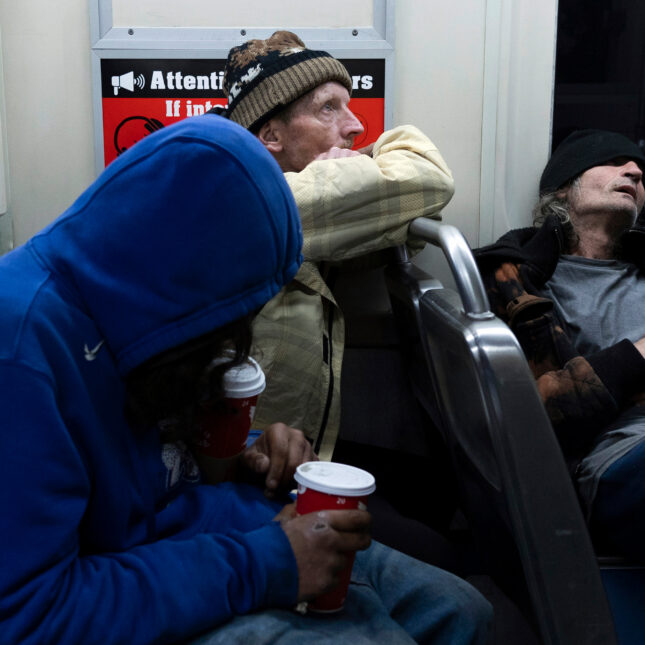
PHILADELPHIA — Shaun Anderson hasn’t slept this late in the day in years. He still wakes up a few times throughout the night — a habit he’s developed trying to protect himself from being jumped while at his most vulnerable. This morning, however, he slept so deeply he didn’t hear his doorbell ring. He wasn’t used to even having a doorbell, or a regular place to sleep — housing is one of many things he’d lost to a decades-long battle with opioid use disorder. “I hate you heroin — you ruined my life,” he writes in his journal. “You took everything from [me]: my house, car, kids, and my wife.”
Anderson’s story is emblematic of what thousands of Americans struggling with opioid addiction go through every day. For many like Anderson who resolve to quit, it’s far easier said than done. Even for people looking to enter treatment, and who find support systems willing to help, basic obstacles like housing, safety, and money can make recovery all but impossible. “I just feel like I’m stuck. I feel like life’s passing me by,” Anderson, 44, laments. “All I ever wanted was to be a good husband and father. … Heroin mess[es] with you. I forget who I am — which is a good, honest, funny man.”
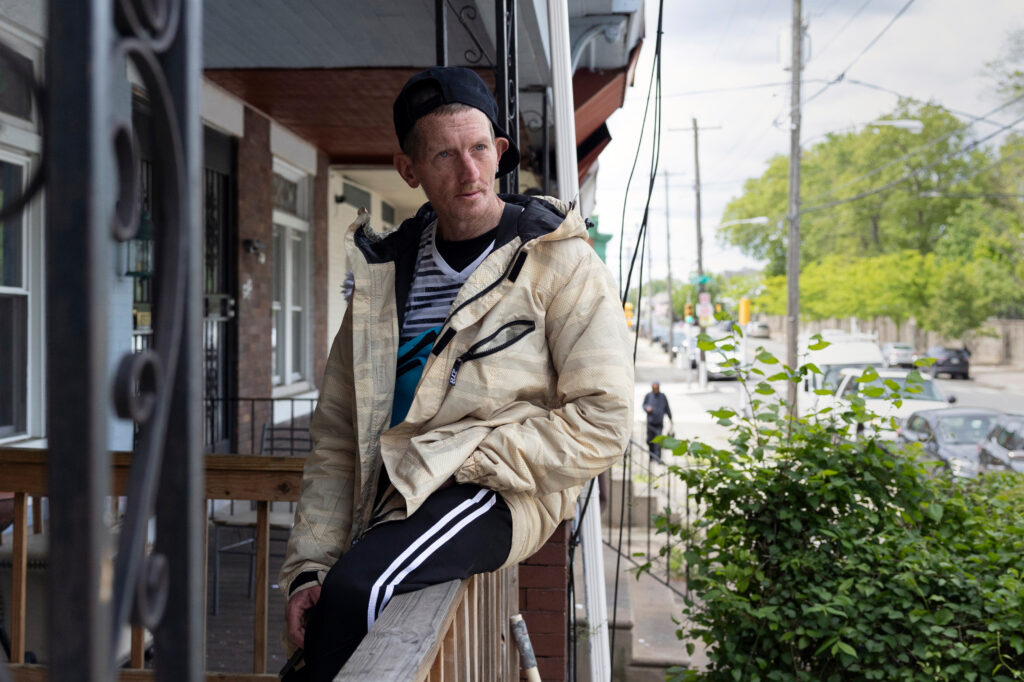
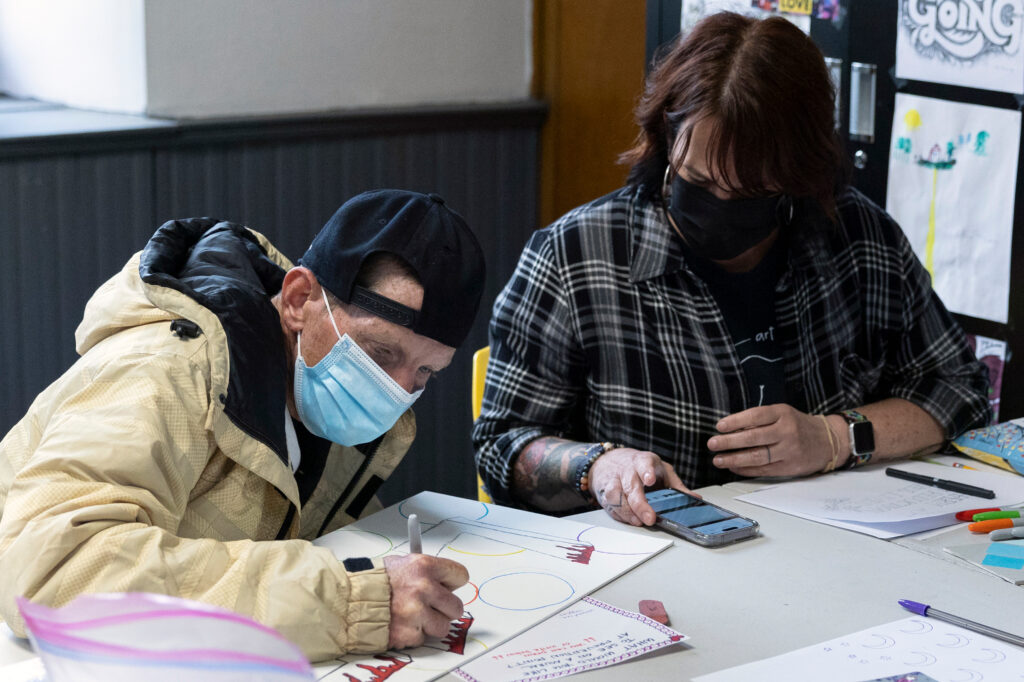
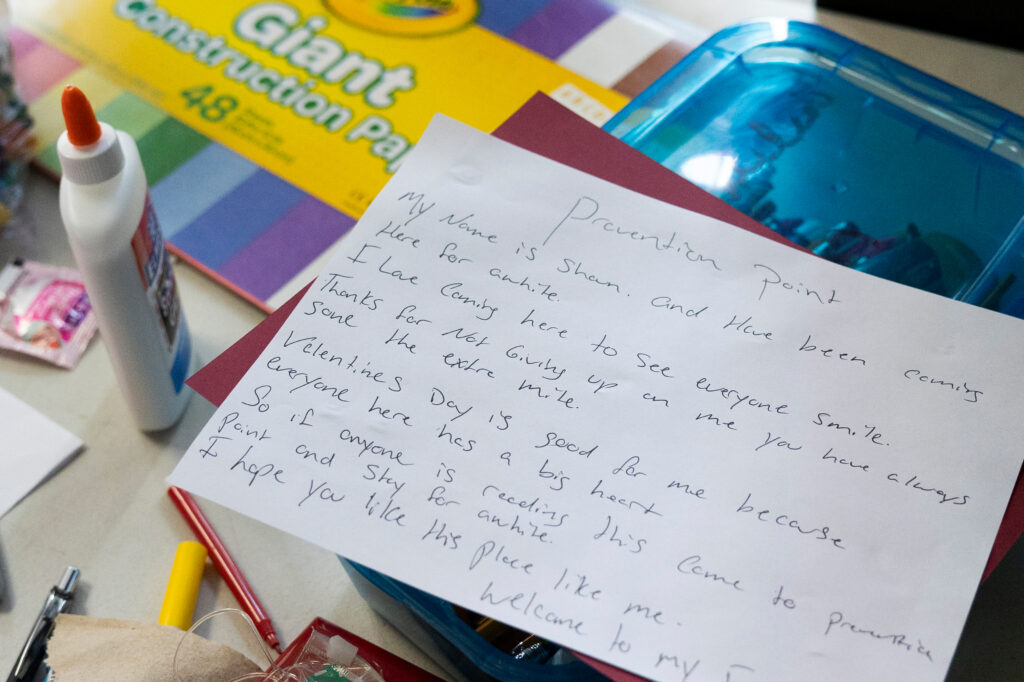
STAT spent time with Anderson over the course of several months in Philadelphia’s Kensington neighborhood, which is said to be the largest heroin market on the East Coast. About 300,000 people in Pennsylvania are dealing with a substance use disorder, according to government estimates. The state has the third highest rate of overdose deaths in the country, with 15 lives lost to overdoses each day.
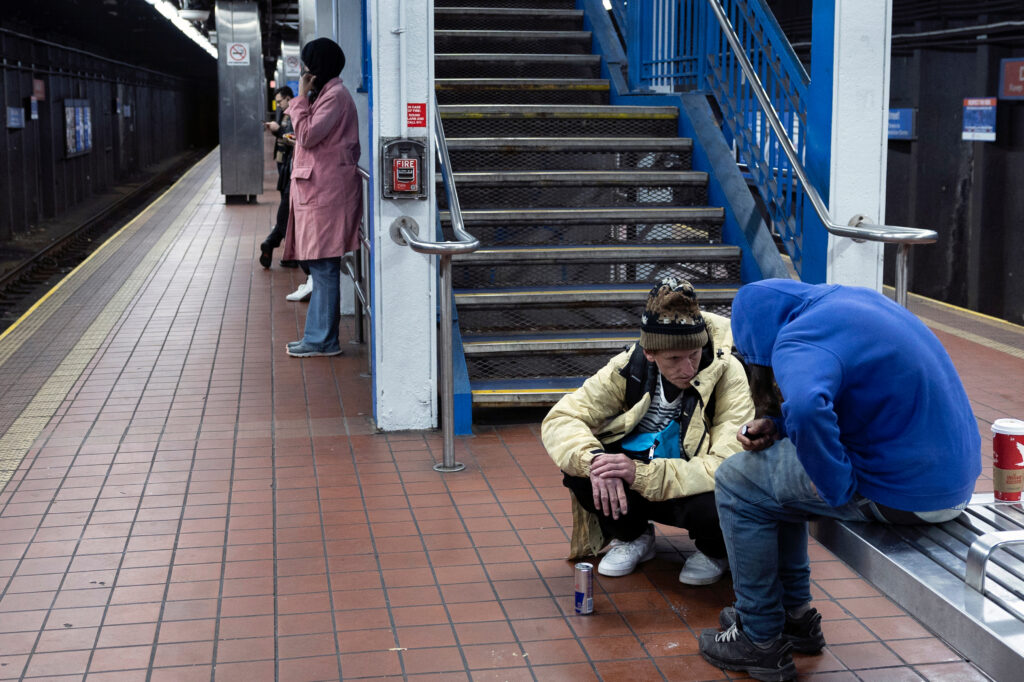

Pennsylvania is one of only 10 states where syringe service programs are illegal. Some programs, though, operate under local municipal ordinances. Founded in 1991, Prevention Point is the oldest needle exchange program in the city, and is a daily stopping point for Shaun Anderson. Prevention Point offers outreach programs, primary care, mental health services, meals, housing case management, and more. The services couldn’t be more needed by the community. “[Kensington] is one of the more heavily hit areas. It’s been like this for years,” admits Sarah Carroll, Anderson’s case manager at Prevention Point. Still, Carroll is fond of the neighborhood. “It’s a wonderful community. It’s diverse; it’s accepting,” she says. “And everybody from the United States comes to visit!” she quips.
It’s in Kensington where xylazine, an animal sedative known as “tranq,” probably started gaining ground in the illegal drug supply almost a decade ago. Although Prevention Point supplies drug testing kits, tranq is practically unavoidable, found in over 90% of the city’s drug supply. Heroin is already highly addictive on its own, and is made even more addictive by fentanyl and tranq. In 2021, fentanyl was found in 94% of accidental opioid overdose deaths in Philadelphia, and tranq was found in 44% of deaths. Tranq also causes severe wounds including necrosis: the rotting of tissue. Anderson once experienced a sore from xylazine that was so deep “I could put two fingers in my leg,” he says.
A Delaware native, Anderson moved to Philadelphia five years ago in search of heroin. His life in Delaware had been difficult. When he was a child, his father would beat his mother; when Anderson would intervene, he’d get hit as well. Later in life, he says, both of his children and one of his sisters died and he had to identify their bodies — an experience that still gives him nightmares. Anderson’s mother used drugs, often encouraging him to join her. It helped, he says, to dull the trauma. “A lot of people got mental health problems. That’s why a lot of people use,” Anderson says. “I’ve been using for like 20 years.”

After years of housing insecurity, Anderson signed the lease to an apartment in southwest Philadelphia in May. He was able to rent the apartment due to consistent advocacy from Carroll. Carroll is in recovery herself, and couldn’t be happier to help. “[Housing] can make an individual, especially Shaun, feel complete,” she says. Her efforts do not go unnoticed. “I love Sarah. Sarah’s awesome, man,” Anderson gushes. “Sarah cares, she really does. She’s saving my ass.”


To Prevention Point, “Housing is health care; housing is wellness,” states Silvana Mazzella, interim lead executive officer of Prevention Point. “Maybe somebody is not yet ready for recovery, but that does not mean that they don’t deserve safety and peace and rest.” As far as outcomes, Mazzella says, “[Some] people have gotten into our program, gotten housed, and they flourish. They are self-sufficient and have a high quality of life. We also have people who — maybe they don’t become employed or address every issue they have or every need they’ve relayed to us. But they’ve become housed. What is wrong with that?”
The demand, though, is much higher than the supply. “There are certain guidelines that have to be met to qualify for housing, and at times it can be very difficult,” Carroll says. “And there’s not enough.”
Before getting the apartment, Anderson says, he was robbed or jumped almost daily. Still, he has been stolen from and beat up several times in the past several months. In June, he had to spend the night in the hospital emergency room after trying to stop an attempted sexual assault at McPherson Square Park. “No one else even tried to help,” he sighed. The following day, his body ached from head to toe: discomfort he attributed to being beat up in the park. It turned out, though, that the source of pain was actually an abscess next to his heart — a common affliction of chronic IV drug users. “My friend died of this,” he cries from his room at Temple University Hospital.
“I’m used to giving, not receiving,” Anderson explains about himself. Mere hours after being released from the hospital in June, Anderson picked up a rainbow-colored teddy bear he found on the street and, a few blocks later, handed it to a woman who was in a heated argument with her boyfriend. Receiving the bear caused the couple to stop their fighting for a moment. The woman looked surprised but pleased by the sudden gift. “I know the people — they’re good people,” Anderson explains of Kensington residents. They may be messed up on drugs, “but they’ll give you the shirts off their backs, you know?”

Later in the same day, while walking to receive his weekly supply of Suboxone — a medicine that helps treat opioid use disorder — Anderson overheard a young woman who was experiencing withdrawal symptoms remark that she was cold. Without hesitating, he unzipped his black jacket and handed it over to her. Withdrawal is a feeling that Anderson can relate to. “Like, now I’m going through withdrawal and my body’s real hot. … You could get diarrhea, upset stomach … I get a chill up my spine — just like this icky feeling, I can’t explain it. I get like, brain zaps.” Though Anderson wants to quit using heroin, the withdrawal symptoms weaken his conviction; when he’s sick, using heroin is the only thing that makes him feel better. “I haven’t used the whole time in the hospital, so my tolerance is way down. One bag might kill me,” he worries. When asked if he’s often concerned about accidentally overdosing, he answers: “That’s what everybody’s worried about.”


It’s been a halting process, but Anderson is slowly working to achieve recovery. He’s had a somewhat positive experience with methadone, a medication used to treat opioid use disorder. “It’s a work in progress,” Carroll summarizes. “I meet Shaun wherever he is. And whatever he chooses to complete, I’ll be there,” she says. “There’s no methadone clinic in Kensington, though. So that is a big barrier.”
Moving into the new apartment has proved a tougher adjustment for Anderson than he anticipated. Though he had finally started to sleep better in his apartment, he recently chose to move in with a friend back in Kensington instead. Anderson was jumped again in late August, his eye socket broken in the process. He separately was hospitalized and underwent surgery to have his spleen removed. Due to his declining physical and mental health, he didn’t feel he could live alone any longer. He also felt that spending too much time alone increased his chance of using. “I come home to nothing but my thoughts … that’s why I’m never home. I’ll be stuck on my own all day, and then I’ll start using real bad,” he says.
In early September, Anderson finally felt ready to ask Carroll for Sublocade — a monthly injection that manages opioid cravings and withdrawal symptoms. But there’s a lot at stake: If opioids are used while receiving the treatment, it increases the chance of breathing problems, coma, or death. Anderson is optimistic, though; even before the treatment begins, he’s proud to announce that he hasn’t used heroin in 12 days.
“I don’t want to use forever,” he says. “This is my life, and I’m gonna take it back.”

STAT’s coverage of chronic health issues is supported by a grant from Bloomberg Philanthropies. Our financial supporters are not involved in any decisions about our journalism.




Exciting news! STAT has moved its comment section to our subscriber-only app, STAT+ Connect. Subscribe to STAT+ today to join the conversation or join us on Twitter, Facebook, LinkedIn, and Threads. Let's stay connected!
To submit a correction request, please visit our Contact Us page.